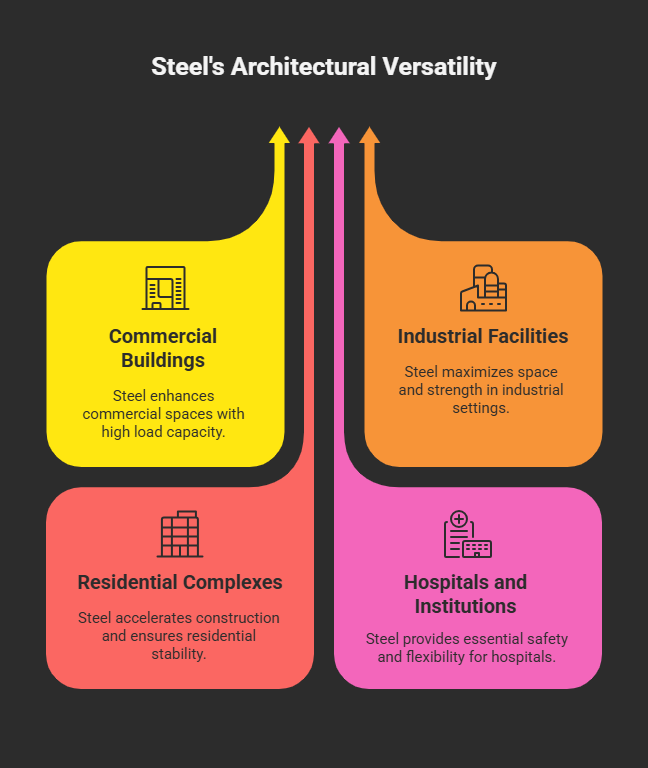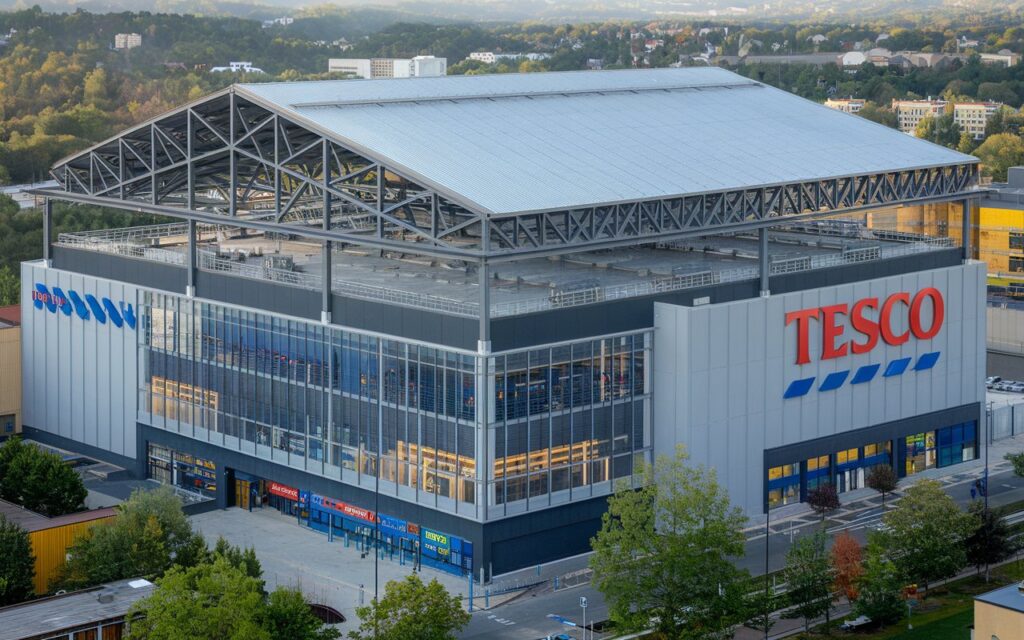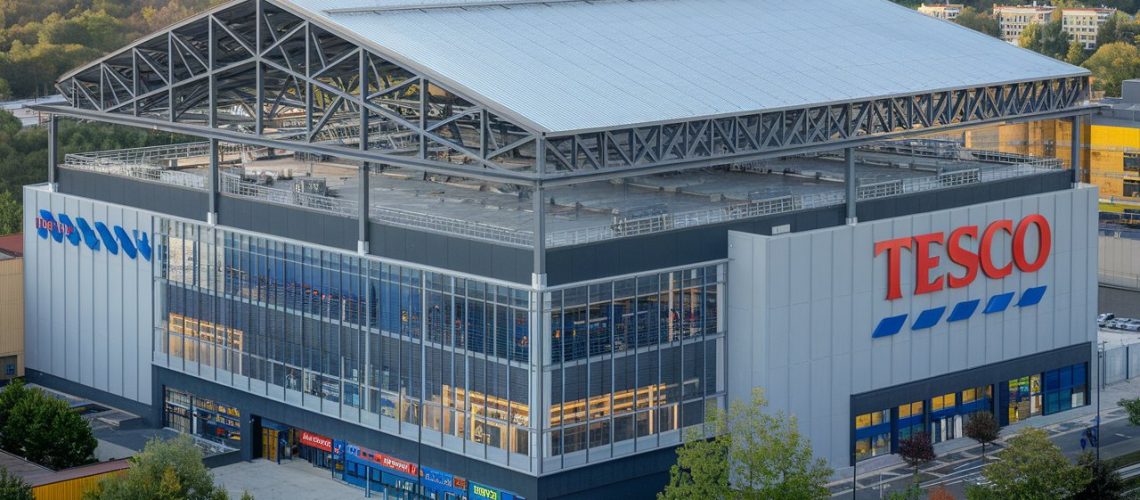A Multi-Story Steel Building is a high-rise or mid-rise structure constructed using a steel framework, offering superior strength, flexibility, and efficiency compared to conventional concrete buildings. These buildings are designed for commercial, residential, and industrial applications, ensuring faster construction, durability, and cost-effectiveness.
Introduction to Multi-Story Steel Buildings
A Multi-Story Steel Building is a type of structure made primarily from structural steel, designed to rise multiple floors above ground level. This method of construction is especially popular in urban environments due to its ability to support tall buildings with minimal material weight, maximum design flexibility, and faster construction timelines.
Key Features of Multi-Story Steel Buildings
1. Steel Framework Structure
The core of a multi-story steel building is its steel skeleton. These frameworks support floors, roofs, and walls without the bulk of reinforced concrete.
2. Lightweight Yet Strong
Steel structures are lighter than concrete but stronger and more durable. This makes them ideal for earthquake-prone zones and buildings that require vertical expansion.
3. Modular and Prefabricated Options
Many multi-story steel buildings use prefabricated parts. This allows faster assembly on-site, reducing labor and material waste.
4. Flexible Design & Expansion
Steel allows for open-floor layouts and can be easily expanded vertically or horizontally without major structural changes.
Applications of Multi-Story Steel Buildings

✔ Commercial Buildings
Shopping malls, office towers, hotels, and multiplexes benefit from the high load capacity and design versatility of steel structures.
✔ Industrial Facilities
Warehouses, data centers, and manufacturing units use multi-story steel designs to maximize space while maintaining structural strength.
✔ Residential Complexes
Urban residential buildings, condominiums, and high-rise apartments increasingly adopt steel for faster construction and long-term stability.
✔ Hospitals and Institutions
Medical facilities require high load-bearing floors, flexibility for MEP (mechanical, electrical, plumbing) systems, and fire resistance—all offered by steel structures.
Advantages of Multi-Story Steel Buildings
1. Faster Construction Time
Steel components are often prefabricated off-site and assembled quickly, reducing construction time by 30–50% compared to traditional methods.
2. Cost-Effective
Although the upfront material cost of steel might be higher, savings come from reduced labor, faster completion, and less site disruption.
3. Durability and Low Maintenance
Steel is resistant to termites, rot, mold, and fire. With protective coatings, it resists rust and corrosion for decades.
4. Eco-Friendly and Sustainable
Steel is 100% recyclable. Many multi-story steel buildings incorporate green practices like rainwater harvesting, solar panels, and energy-efficient insulation.
5. Design Versatility
Architects and developers can push the boundaries of design thanks to steel’s flexibility. Curved walls, cantilevered sections, and large open spaces are all possible.
Structural Design and Load Distribution
Multi-story steel buildings rely on a framework of beams, columns, girders, and trusses. These elements distribute loads evenly across the structure, ensuring safety and compliance with building codes.
Typical components include:
- Steel Columns – vertical supports that carry axial loads
- Beams – horizontal members that transfer load to columns
- Bracings – diagonal supports that resist lateral forces (wind and earthquakes)
Fire Resistance and Safety Measures
Modern multi-story steel buildings are designed to be fire-resistant, often coated with fireproof materials or wrapped with fire-retardant panels. Additional safety features include:
- Smoke extraction systems
- Fire-rated doors
- Emergency exit stairwells
- Sprinkler and alarm systems
Steel also behaves predictably in fires, making evacuation planning more reliable.
Multi-Story Steel vs. Concrete Buildings
| Feature | Steel Building | Concrete Building |
| Weight | Lighter | Heavier |
| Speed | Faster to build | Slower |
| Flexibility | High | Low |
| Cost | More upfront, less long-term | Lower upfront, high maintenance |
| Sustainability | Highly recyclable | Less eco-friendly |
| Earthquake Resistance | High | Medium |
Global Use of Multi-Story Steel Buildings
Countries like the United States, Japan, South Korea, China, and the UAE extensively use steel in high-rise construction. The trend is catching up fast in India, where urban expansion and commercial real estate demand modern construction solutions.
Tesco Structure – Your Partner in Steel Construction

Looking to construct a durable and efficient multi-story building? Tesco Structure specializes in designing and building steel structures for commercial, industrial, and residential purposes.
With advanced design tools, structural analysis, and prefabrication capabilities, Tesco ensures every steel building is:
- Delivered on time
- Compliant with building norms
- Engineered for future scalability
- Backed by expert project management
Conclusion
In conclusion, a Multi-Story Steel Building is the smart choice for anyone looking to build tall, strong, and fast. Whether for business, housing, or industry, these structures offer a future-ready solution that balances performance with sustainability.
As cities grow and construction needs become more complex, steel continues to rise—literally and metaphorically—as the preferred building material. Invest in multi-story steel buildings for long-term strength, flexibility, and ROI.

